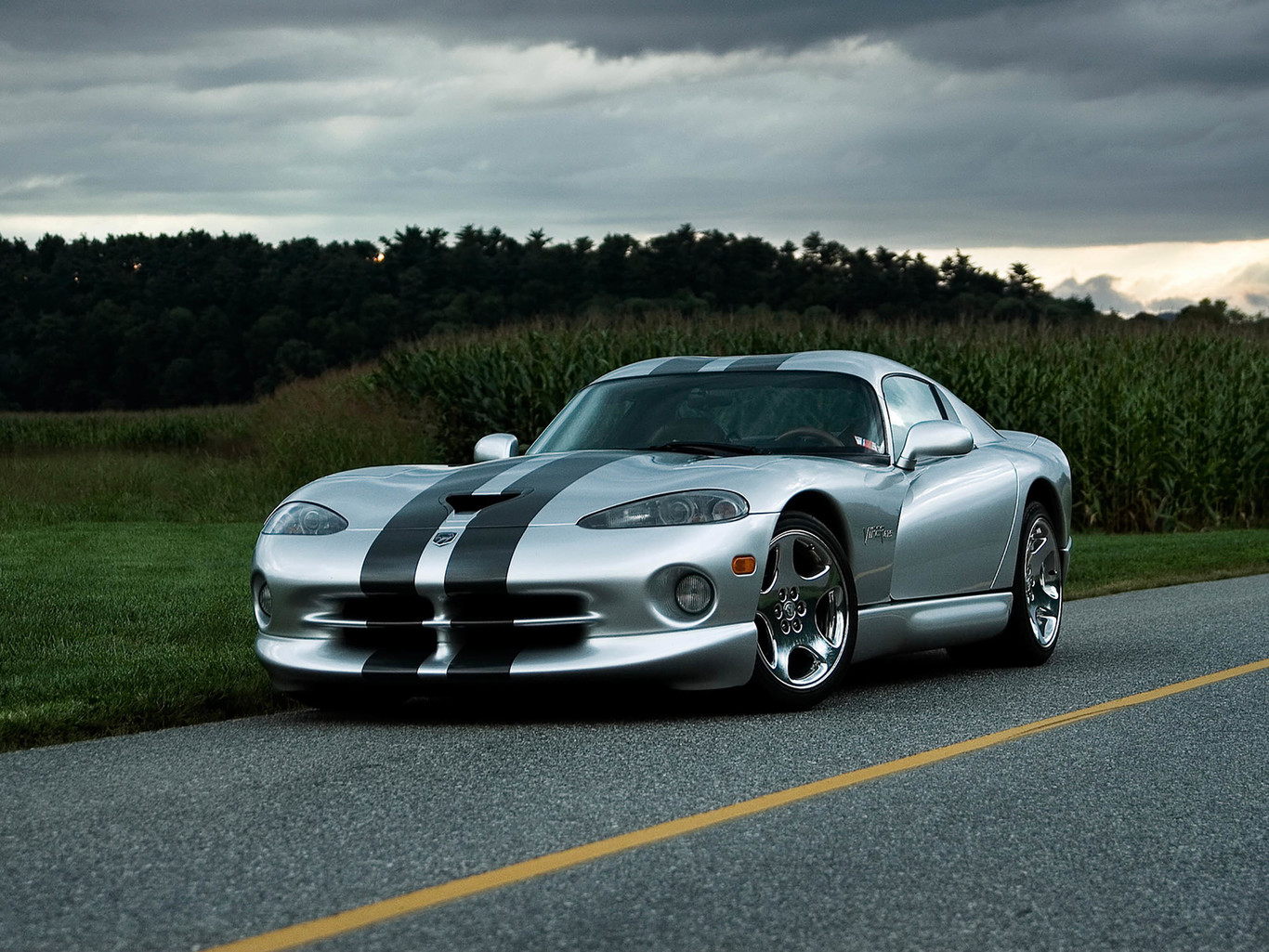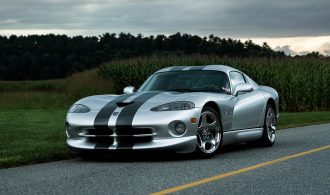Throughout its 25 years and five generations of commercial career, the Dodge Viper remained faithful to the original concept: an atmospheric V10 in front center position, a manual transmission and a rear-wheel drive. That made this sport the spiritual successor of AC Cobra (which is exactly what was wanted when it was created), that is, a very fast car, but extremely delicate and not suitable for all hands. It was almost archaic in its conception and very analogical. And that’s why I had a legion of fans. Hence the surprise in size XL that supposed to read the article by Thom Taylor in Hagerty explaining that there was a Dodge Viper central engine that would lead to the … Ford GT 2005!
The Dodge Viper was (it stopped being manufactured in 2017 ) what is called a halo car. It was born as a concept car and, given its popularity, Chrysler decided to launch a serial version. At Chrysler they knew they were going to lose money with that car (few units would be sold, it was manufactured in an almost artisanal way, its sale price fell short to cover expenses, etc.), but the image it projected, the headlines that it hoarded and the The brand image he created for Dodge more than justified the investment. In fact, it is something that could not have been achieved with a marketing campaign to use it spending twice or triple the cost of the Viper.
 Even so, some Chrysler executives wanted a car that could rival the Corvette, the only American car that customers of prestigious brands (read Porsche, Acura / Honda NSX, Jaguar, etc) considered worthy of the sporting name. That’s what Chris Theodore, then head of engineering at Chrysler and the Viper project, told Hagerty.
Even so, some Chrysler executives wanted a car that could rival the Corvette, the only American car that customers of prestigious brands (read Porsche, Acura / Honda NSX, Jaguar, etc) considered worthy of the sporting name. That’s what Chris Theodore, then head of engineering at Chrysler and the Viper project, told Hagerty.
Creating a sports car with recovery pieces
The development of the mid-engine Dodge Viper began in May 1996 with François Castaing (one of the original Viper’s parents), Roy Sjoberg as chief engineer and Chris Theodore himself. And it was started from a blank sheet. In addition to the different possibilities created by computer, two wooden models were made to study which architecture would be the best. One with the engine facing behind, with the transmission in front and with drive shaft to forward the torque to the rear axle, and another with a forward looking engine and a transaxle transmission.
Logically, the second option had preference, but they had to do both to be able to present the proposals and make sure to choose the one that was best for them. Of course, it was time to develop the third-generation Viper and the investment that was allowed to the team was ridiculous: they had to spend less than the cost of developing the first Viper.
A team of eight engineers formed the development team of the central engine Viper. They managed to create the two chassis by fully recovering elements of the Viper then in production, including some body panels. The objective was to determine which were the best packaging solutions, the proportions of the car and its physical volume.
For example, they recovered the front suspensions and the steering, as well as the dashboard and the V10 of the second generation Viper. The two “cars” did not cost more than 10 million dollars in total. That is, a drop of water in the development budget of a car.
In October 1996, the project was presented with the two models , a 50-page dossier, some Ferrari as a reference and a serial Viper disguised with what could be the body of the Viper central engine. Bob Lutz did not seem very interested and in a short time, the then CEO of the Bob Eaton group changed it (Bob Eaton was the architect of the sale of Chrysler to Daimler, something with which Lutz did not agree), Castaing and Sjoberg They went on to something else too. There was only Theodore and the new engineering chief John Fernandez to believe in the Viper central engine.
Both insisted and presented a new project named GTM, by mid-engine GT (GT of central engine). There were up to three models to validate the direction the design should take. According to Theodore, “they were similar to the Ferrari 355”. However, Daimler bought Chrysler in 1998. At the time there was talk of a merger, but the reality is that Daimler bought, made and unmade what he wanted at Chrysler. And that meant the end of the Viper’s central engine project.
The Ford GT was born on an airplane
In March of 1999, Chris Theodore has left Chrysler and is working at Ford . It is responsible for carrying out the purchase of Volvo by the US giant, but still thinking of a central-engine sports car. Finally Ford may be the ideal place for it.
After all, the Dodge Viper was a modern version of the AC Cobra (which used a Ford engine) and the Viper GTS a modern version of the Cobra Daytona (also with Ford engine, remember) to the point of being presented with the same blue and white stripes than the original. Now that he’s at Ford, he can make a central-engine sports car to pay tribute to the Ford GT 40. It’s something Ford has been planning for years but it does not seem to be serious.
On the return plane, Theodore is with Jac Nasser (then CEO and President of Ford) and basically all of Ford’s top management. Theodore gave up the idea of making a modern Ford GT 40 and capitalizing on the image of that model.
Maybe it was the euphoria of heights, the feeling of power with everything ( at that time they were buying Volvo, but also Jaguar and Aston Martin for example) or simply that they really thought it was a good idea, but everyone accepted enthusiastically. And so the project of a modern Ford GT 40 was born . The project was delayed a bit, but in the end in 2005 the Ford GT was a reality.
Obviously, the Dodge Viper central engine did not give rise to the Ford GT as indicated in Hagerty, just Ford did see, could and wanted to hold on to **** the opportunity and ideas of Chris Theodore for the development of a motor sports central. Something that Chrysler did not finally have the guts to do, because as we have, it was not a matter of budget, but simply a lack of interest on the part of the group management.

